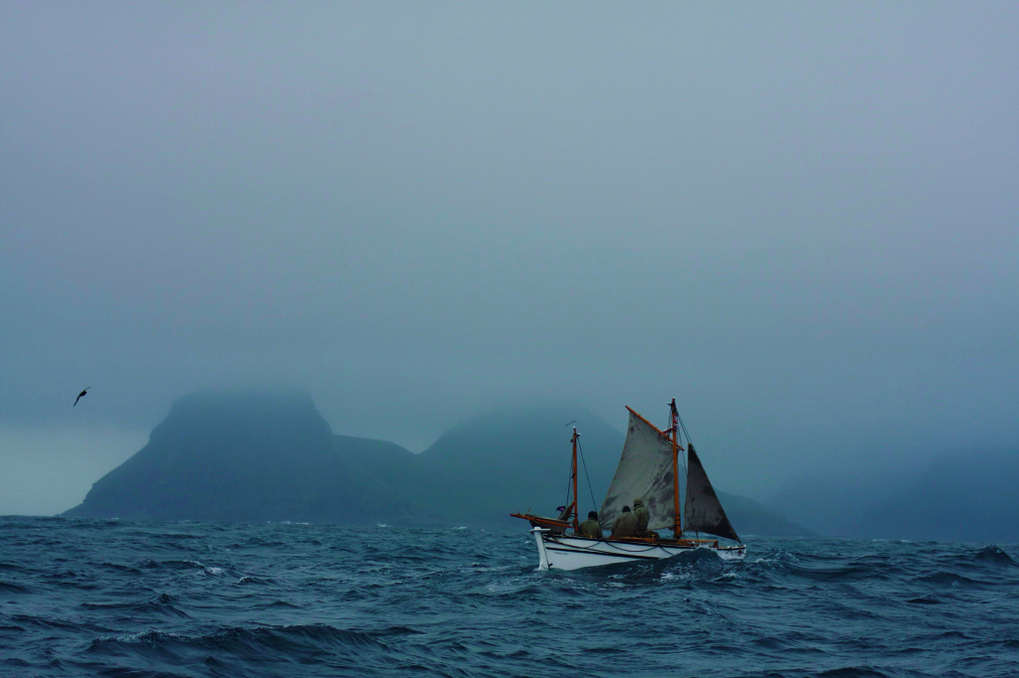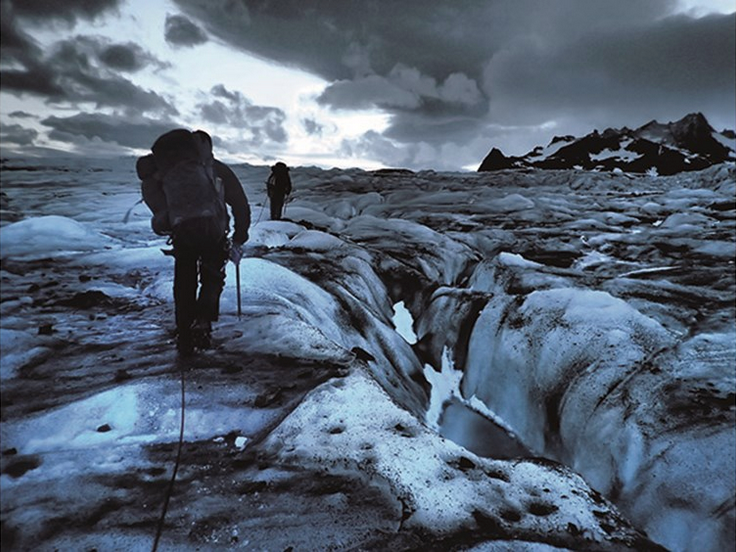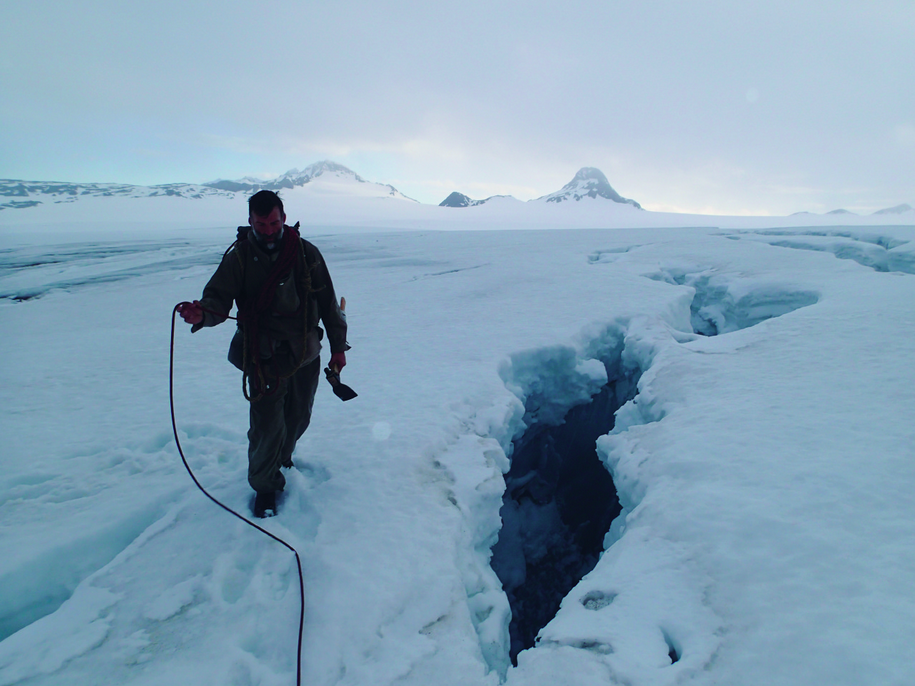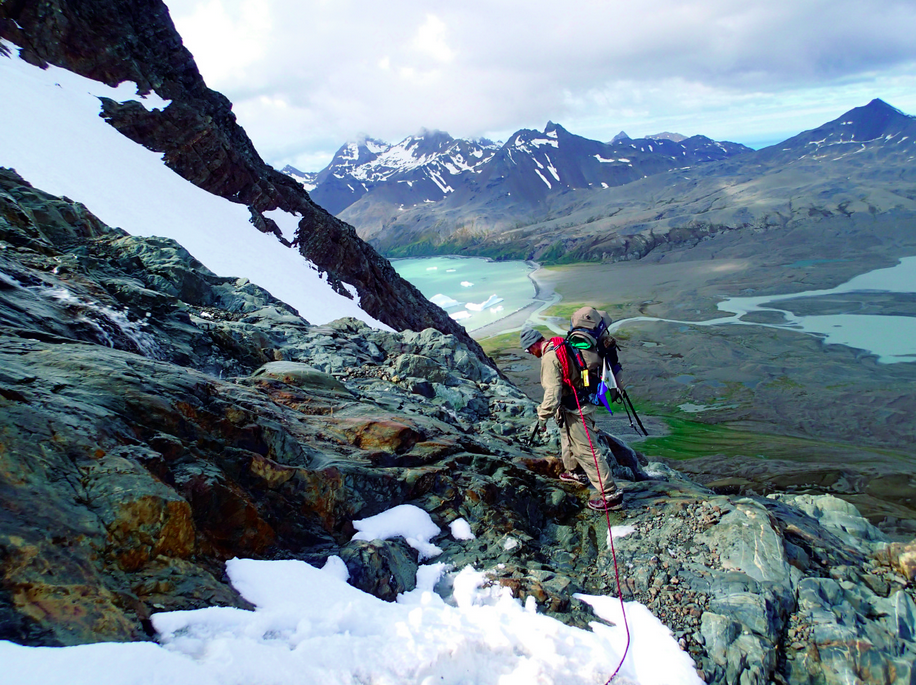
Episode #7: Does It Matter How We Create Energy?
A Conversation with Tim Jarvis, Environmental Scientist and Explorer
Tim Jarvis takes us on a journey to the planet’s remotest places. He shares with us what he’s seen over the course of his expeditions from the sheer majesty of polar bears in their natural habitat, to witnessing firsthand the melting of the ice caps in the Polar Regions. He urges us all to play our parts in protecting our beautiful home and explains how YOU can join him on his next expedition to climb 25 glaciers at the Equator. VIEW FULL TRANSCRIPT BELOW
Monica: We’re here with Tim Jarvis, environmental scientist and explorer of the planet’s remotest places. Tim, we’re so happy to have you here with Turtle Talks and we’d love to learn a little bit more about your background.
Tim: It’s great to be here, Monica. I’m an environmental scientist, studied my qualifications over many years, and I’ve been working in the environmental field for over two decades now. And it’s long since been apparent to me that the most effective way to get messages across to try and affect environmental change is not only to have a relevant background but also to have a vehicle by which you can get your messages across. And in my case, it’s my expeditions to some of the most remote places in the world, including the Polar Regions where melting ice caps are a very powerful visual prompt for people to actually try and do something about the issue of climate change.
Monica: Tim, how did you get so interested in this type of exploration?
Tim: I grew up in Malaysia as a kid in the 70s and it was pre-internet, obviously, and there was nothing on TV and I was an only kid at that stage – my brother came along seven years later – and I was just very creative. My parents would send me off playing on my own and I’d go off into the jungle and there was plenty of jungle around back then. And I sort of made my own world and developed a sense of resourcefulness that’s really remained with me to this day. So I guess it was my formative years that set me on the path towards, ultimately, doing what I’ve done since.
Monica: How many explorations have you done?
Tim: I’ve been traveling my whole life. I cycled the length of the Sierra Madre mountains in Mexico on a mountain bike 25 years ago, paddled across normally dry salt lakes in the center of Australia, but I’ve also done a lot of stuff up in the Arctic and the Antarctic and then most recently retracing Ernest Shackleton’s journey. So I suppose I’ve been doing this stuff for as long as I can remember. It’s just the scale of the expeditions has gotten bigger over time. So I’d say probably 20 genuinely unsupported expeditions where you’re completely responsible for your own livelihood when you’re out there, you don’t have a big team of people backing you up.
Monica: What is the size of your team, typically?
Tim: Team size with the Shackleton expedition that I did most recently in 2013, that was a team of six. Essentially because Shackleton had six in his tiny 23-foot rowboat that he took across the Southern Ocean from Antarctica to the Subantarctic. But normally I would go with a team of, perhaps, one other person or often solo.
Monica: It’s just remarkable to even imagine the kind of choices that you’ve made to lead to those types of adventures. What have you seen over the course of your travels and your expeditions?
Tim: In terms of what I’ve seen, going up to the High Arctic, leaving from October Revolution Island up in the Russian Arctic, stepping out onto the surface of the Arctic Ocean to head off towards the North Pole, you see some really remarkable things. You see all of the old Cold War early warning stations that were placed up there with a view to warning the Russians of an imminent nuclear attack had it come from the US because, of course, missiles would have been fired over the North Pole. It was the shortest way to get from A to B in either direction. And you set off from there and you’re walking on a very fragile skin of ice on top of a 7 or 8000 feet deep ocean. And just the extent to which that ice is now melting is something that, sadly, will remain with me for a long time. The memory a bit longer than the actual ice itself will last because it’s melting very, very quickly.
Being stalked by polar bears, on the one hand, you are fearful of it, but on the other hand it gives you an incredible sense of the majesty of those creatures. And it’s a real privilege, actually, to be hunted by an animal like that out in its habitat. It’s very rare to get the opportunity to feel like you’re not the top of the food chain as a human. And that’s really quite an interesting experience.
And down in places like the Antarctic, just the sheer scale of the place. It’s almost twice the size of the lower 48. And it’s covered in over a mile average thickness of ice in a place twice the size of the lower 48 States. It’s just a remarkable place to be. Apart from the oceans and space, I don’t think you can find a bigger environment through which to travel. And you really get to understand your own insignificance in the scheme of things. It’s a very humbling experience.
Monica: So as you’ve moved around the planet in this way, what would you share with us in terms of the health of the planet and how we’re faring living in harmony with our planet?
Tim: We’re unfortunately not living in harmony with the planet. I think the problem is we consume far too much. Everybody assumes that somebody else will sort out the problems or somebody else will make the sacrifices. And essentially we’re using the planet in a completely unsustainable way. Currently there are seven billion of us. And by 2050, 2060 there may be nine, or perhaps even more, billion people on the planet. And the problem is not just the number of people, it’s the fact that many of those people will aspire to live the lifestyles of people in The States or Western Europe or Australia or wealthy Asian countries. They will aspire to want to have more. They’ll eat more meat, they’ll eat more sugar, they want cars, they want bigger houses, they’ll consume more energy. And so it’s not difficult to see that we’re heading in entirely the wrong direction in terms of keeping the planet alive. It’s the only one we’ve got. We have to be very conscious to try and protect it. So I am very concerned about where things are at, which is really why I’m determined to try to do something about it, play my part, anyway, in trying to sort out some of the problems we’re faced with.
Monica: What is the best way that you feel you can play your part?
Tim: I think the best way I can play my part is by setting an example, many people said you couldn’t do what Shackleton had done 100 years ago, crossing the Southern Ocean in a small rowboat with the same old clothes and the same traditional navigation, a journey that Sir Edmund Hillary, who first climbed Everest, had described as the greatest survival journey of all time. And I think by achieving that you set an example to others of the kinds of things that can be achieved.
And I think, really, tackling many of the social and environmental problems we have can be tackled almost in the way that one looks at tackling immense logistical and physical challenges and mental challenges that you have on an expedition. You have a goal, you have a bunch of different stakeholders and players that you need to get to pull together to work towards the achievement of your goal, whatever it might be. And that’s the same in an expedition context as it is with, say, an environmental problem. In this case, with an issue like climate change, we need to get a series of private and governmental and NGO players to pull together. And in the case of an expedition, it might be your immediate team or your sponsors or the broadcast partners or whoever to work together to achieve your expedition outcomes.
So I’m trying to bring that kind of outcome focused mindset that I’ve developed over 30 years of doing expeditions to try to deal with some of the environmental problems we’re faced with.
Monica: So certainly witnessing your expeditions and your passion for environmental health is truly inspiring. As we witness you doing this, what can each of us do to help the planet? How can we accelerate progress together?
Tim: Well, this is something I’ve learned over many years of doing the expeditions and many years of working in the environmental field is that most people feel very disempowered. They don’t know what to do. And I can come in and deliver a lecture saying, “The ice caps are melting, we need to do something. Here are the stats. Over to you.” But the “Over to you” bit is the difficult bit. This is telling people what it is they can do so that they feel that they can make their contribution.
I think humans are very evidence based creatures. One of the biggest problems I ever have on polar expeditions, or on my latest Shackleton journey, is you’re moving towards an endless seemingly unchanging horizon. With Shackleton it was a small boat on the Southern Ocean where, really, the horizon looked the same most days. You just didn’t know you’d moved anywhere. And similarly with an ice cap, you find yourself in the same sort of situation. You’re looking at an endless white and you need to draw on immense mental reserves to convince yourself you’re moving forward. And I actually think there are some really interesting parallels between that and the environmental direction in which we need to be heading, in that sometimes progress towards the positive outcome can’t be seen but you just have to have the faith that we are moving in the right direction and find indicators close to home that convince you that you’re moving forwards, to keep yourself motivated.
Monica: So 25zero is your next up and coming expedition?
Tim: That’s right. The name of the expedition is a play on two sets of statistics. One is the fact that we have 25 mountains at the Equator with a glacier. The other one is the fact that in 25 years, or roughly, we will have no ice left on those glaciers because of climate change. And it’s about myself and teams of others climbing these mountains, highlighting the amount of decline that’s happening, and relaying that information back, in the first instance, to the climate change talks in Paris at the end of this year. But also using the climbs to raise awareness, to get other people involved, and to raise funds to projects that are actually doing something about combatting climate change.
And this is why with my 25zero project I’m interested in trying to offer people a way that they can become involved. They can climb one of the mountains at the Equator that’s still has a glacier to highlight the fact that these glaciers are melting. And the reason they’re melting is because of climate change. And that climate change is human-induced. They can do a virtual climb of a mountain. In other words climb something to the equivalent height of a mountain at the Equator, with a glacier. Maybe their stairs in their office building, or if they’re kids at school they can climb the stairs in their school block or go to their local hill and climb it multiple times and cumulatively reach the height of, say, Mount Kenya or Kilimanjaro or Chimborazo or Cotopaxi, these mountains with glaciers at the Equator. And in so doing, raise funds and raise awareness for projects that are doing something about the climate change issue. And I’m working together with WWF on those projects. And we’re interested in getting both people involved in raising funds for them.
So I’m trying in my own way to use my latest expedition to try and fund some of the parts of the solution to this very complex issue of climate change.
Monica: And what do you think some of the main solutions might be?
Tim: I think it’s community level activity that can repeated and repeated and scaled and scaled and we can make the IP of what one group of people have done freely available to the next group of people so that they cannot make the same mistakes as the previous group, not have to reinvent the wheel each time, and share information more widely so that we can populate the world with a whole series of small-scale interventions that just can be repeated and repeated and repeated.
To give an example, I know a community here in Australia who installed a wind turbine so that they could be completely self-sufficient in terms of energy. This is a community of about 50 households. And the trials and tribulations they had to go through, of becoming an energy provider, going through all the occupational health and safety stuff they had to go through, hiring contractors, having to go through a fair process of hiring those people to actually build and install this wind turbine, making sure it was all done transparently, managing the funds, having insurance for that to happen. All of that stuff is enough to prevent the next community wanting to take up the challenge of doing that for themselves, even though there might be plenty of positive intent. And I think if that first community could put together almost a pack of information that said, “This is how you do this, this is how you do that, this is something you don’t want to do.” And it could almost act as guidance to the next group of people so that they could replicate what the previous group had done without the need to have to go through the pain of experiencing all of that all over again for themselves, to the extent that it may prevent them either A, embarking on the journey to do it or B, meaning that the whole venture would stall half way through.
I think if we can really take examples of what’s worked and make that information readily available to the next group of people, we can really populate the world with a whole series of positive things from the grassroots up rather than waiting for federal governments to come in from on high and give us the solution, which is not going to happen.
Monica: Tim, how is it that you chose to make this your life’s work? Why are you so passionate about it?
Tim: The journey for me started off just spending a lot of time and having a lot of formative life experiences as a kid in nature. And that led to the expeditions and that, in turn, led to a kind of environmentalism – even though I wasn’t really aware of it at the time. I just felt that I wanted to see these places continue to flourish and continue to want to experience them for myself and for my kids to want to be able to experience them. And so I find that if you spend enough time out there, you just develop a desire to want to keep those places protected. So your environmentalism comes from your love of spending time in the outdoors. And then you come to the realization that there aren’t many people who are actively trying to protect those places and you realize that if you have an opportunity to do something, you really feel it’s incumbent upon you to actually do something. I have this vehicle, which is my expeditions, my books and my films and my public speaking. You feel as though you really should be making use of that to try and affect positive change.
Monica: And as you’ve lived your entire life this way and you look towards your own future, how do you imagine describing your legacy to your children, your grandchildren, your community? What is your greatest aspiration for yourself?
Tim: My greatest aspiration really is that I have made a difference. I have made a positive difference. I didn’t stand by and just let it all happen. I don’t want my kids and their kids to look back on us and say, “Are you one of those people who just continued to use fossil fuels even though all the evidence was completely compelling that you were destroying the place for us? And you consumed so much, again, in the knowledge that it was just completely unsustainable. What were you thinking?” I don’t want to be seen to have sat idly by as we’ve lived that way and we’ve left our kids and grandkids with a legacy of our overconsumption. I want to be someone who can say that I’ve actually stood up and tried to make a positive difference using all the tools at my disposal, if you’d like, my environmental background, the profile I’ve enjoyed with my expeditions, the leadership that I hope that I have demonstrated in the things that I have done. I just couldn’t live with myself if I felt I’d just sat idly by and enjoyed the fruits of this wonderful world that we live in and not try to make a positive difference.
Monica: Thank you, Tim, for inspiring all of us to rise to our own fullest potential and do whatever we can do to make a difference, as well.
Tim: Well, we try to do that. We try and set a positive example. I am a fundamentally optimistic person. And I think we know many of the solutions to the problems that are facing us and we now just need to try and deliver those solutions.
Monica: Tim, thank you so very much for joining us in conversation around Turtle Talks and we certainly wish you all the best with 25zero and in the other expedition you have coming up. We’d be delighted to support you in all your success.
Tim: Thanks, Monica.
 About Tim Jarvis: Tim Jarvis AM (Member of the Order of Australia) is an environmental scientist, author, adventurer, and public speaker with Masters degrees in environmental science and environmental law. He is committed to finding pragmatic solutions to major environmental issues related to climate change and biodiversity loss. He is an experienced leader across disciplines and uses his public speaking engagements, films, and books about his expeditions and work to promote progressive thinking in these areas. Tim is leader of 25zero and WWF-Australia’s Global Ambassador.
About Tim Jarvis: Tim Jarvis AM (Member of the Order of Australia) is an environmental scientist, author, adventurer, and public speaker with Masters degrees in environmental science and environmental law. He is committed to finding pragmatic solutions to major environmental issues related to climate change and biodiversity loss. He is an experienced leader across disciplines and uses his public speaking engagements, films, and books about his expeditions and work to promote progressive thinking in these areas. Tim is leader of 25zero and WWF-Australia’s Global Ambassador.

















No Comments